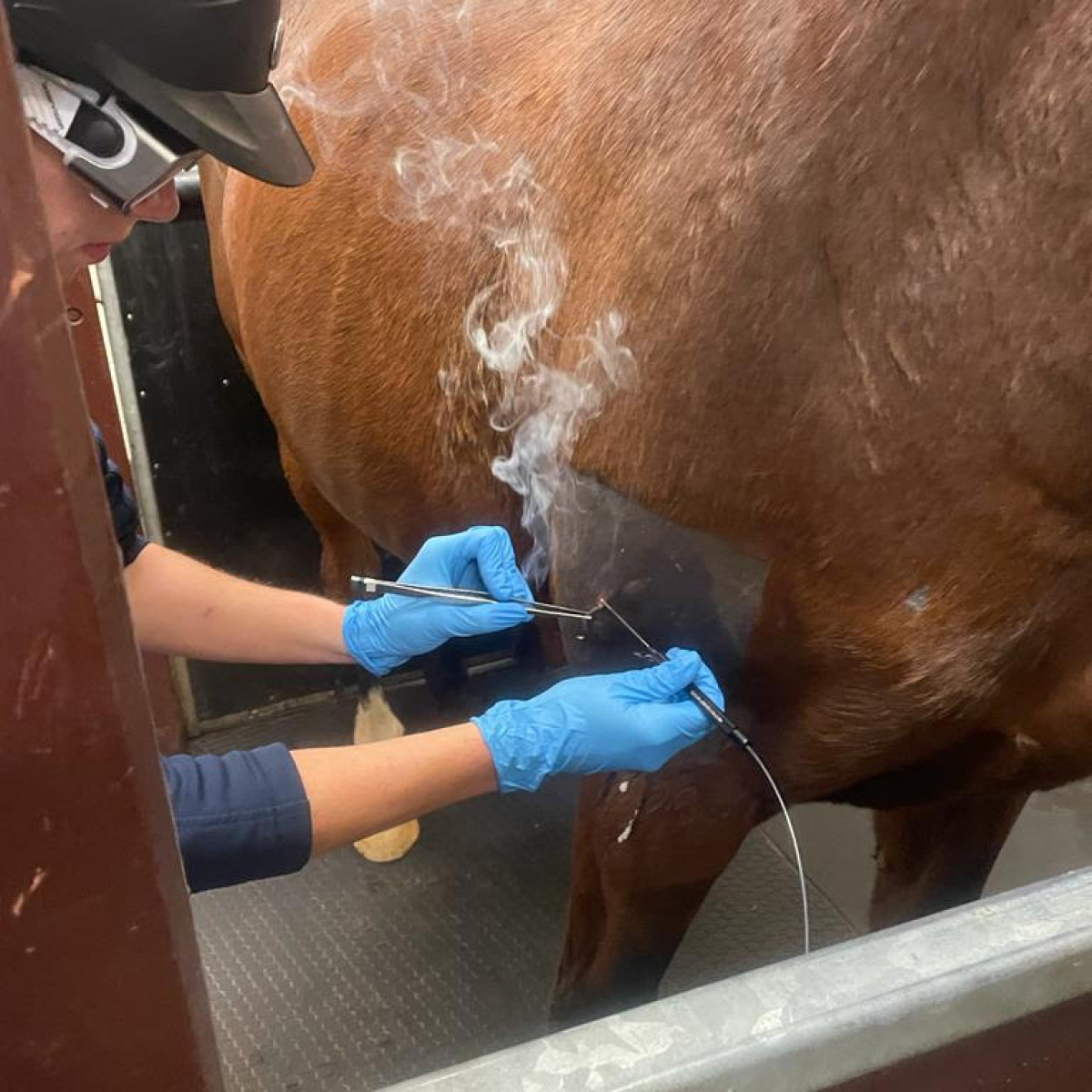Why Equine Therapy is Coming To Be a Preferred Choice for Emotional Health
Why Equine Therapy is Coming To Be a Preferred Choice for Emotional Health
Blog Article
Just How Laser Treatment in Horse Treatment Is Changing Vet Look After Horses
Laser treatment has actually emerged as a transformative approach in equine veterinary treatment, providing a non-invasive remedy that expedites recovery and improves general wellness. The portability and adaptability of laser therapy tools further highlight their expanding indispensability among vets.
Understanding Laser Treatment

The modern technology behind laser treatment is grounded in the concept of photochemistry, where photons are absorbed by chromophores within cells, causing raised ATP production and modulation of reactive oxygen species (Equine Therapy). This, consequently, promotes cellular proliferation, decreases inflammation, and speeds up recovery. Vet practitioners utilize different kinds of lasers, including low-level lasers (LLLT) and high-power Class IV lasers, depending upon the specific therapeutic objectives and the nature of the equine condition being treated
Various laser wavelengths and power setups are meticulously chosen to target different tissue depths and achieve desired clinical outcomes. Safety procedures are vital, as incorrect usage can cause thermal damage or suboptimal therapeutic effects. Thus, an extensive understanding of laser therapy's mechanisms and applications is essential for its effective execution in equine vet method.
Benefits for Equine Health
The myriad advantages of laser therapy for equine wellness include boosted recovery, pain decrease, and improved wheelchair. This advanced therapy modality leverages certain wavelengths of light to penetrate cells, promoting mobile feature and advertising fast cells repair work. The non-invasive nature of laser therapy ensures very little stress and discomfort for the steed, promoting a smoother recovery process.
Improved recovery is one of the primary benefits, as laser treatment accelerates mobile regeneration and collagen synthesis. Pain reduction is accomplished through the anti-inflammatory impacts of laser therapy, which reduces swelling and minimizes the manufacturing of pain-inducing chemicals.
Better wheelchair is one more crucial benefit, specifically for efficiency and functioning steeds. By reducing inflammation and pain, and enhancing cells repair service, laser therapy aids in bring back joint feature and muscle flexibility. The cumulative effect of these benefits is not just a quicker go back to regular task however likewise a total improvement in the equine's high quality of life. Therefore, laser therapy stands as a transformative device in modern horse veterinary treatment.
Typical Conditions Dealt With
Laser therapy has arised as a flexible therapy option for a variety of usual equine problems. Among these, musculoskeletal injuries are specifically open to laser therapy. Equine Therapy. Soft cells injuries, such as tendonitis and ligament strains, take advantage of the anti-inflammatory and analgesic effects of laser therapies, which speed up healing and lower pain. In addition, laser treatment works for conditions like osteo arthritis, where it aids reduce joint inflammation and promote cells repair.
Wound monitoring is one more location where laser therapy has actually shown considerable assurance. Chronic injuries or slow-healing click this site ulcers can be especially challenging in equines, but laser therapy boosts cellular regeneration and boosts blood circulation, therefore expediting the healing process. Laser treatments have actually been effectively used in managing hoof conditions such as laminitis and abscesses, relieving pain and promoting quicker healing.

Technology Behind Laser Therapy
Beyond the myriad problems treatable with laser treatment, the modern technology itself merits closer examination. At the heart of laser therapy is the usage of certain wavelengths of light to permeate tissues and elicit organic feedbacks. These wavelengths, commonly varying from 600 to 1000 nanometers, are selectively soaked up by chromophores in the skin, muscular tissue, and various other tissues, instigating a waterfall of mobile events.
Laser tools made use of in vet medication typically use low-level laser therapy (LLLT) or cold laser treatment. Unlike high-powered medical lasers, these devices operate at lower energy levels, maximizing therapeutic advantages while lessening thermal damages. The power from the laser light promotes adenosine triphosphate (ATP) production, boosts cellular metabolic process, and speeds up cells repair work processes.

Success Stories and Situation Researches

Showcasing the substantial benefits of laser therapy, various success stories and situation researches brighten its transformative effect on equine health. One such case includes a pedigreed racehorse suffering from persistent tendonitis. Standard therapies produced minimal enhancement, however after integrating laser therapy into the regimen, the horse exhibited significant decreases in swelling and discomfort within weeks, inevitably going back to affordable auto racing.
An additional engaging instance features a dressage equine identified with serious neck and back pain, limiting its performance. A vet group used low-level laser treatment (LLLT) to target the swollen areas, leading to marked improvement in versatility and a remarkable decline in pain. Over numerous sessions, the steed reclaimed its peak type, showcasing the effectiveness of laser therapy in resolving musculoskeletal concerns.
Additionally, a research conducted at a leading equine clinic analyzed 50 steeds with different soft cells injuries treated with laser treatment. The results stood out: 85% of the steeds showed increased healing times and enhanced wheelchair. These cases underscore the adaptability and performance of laser treatment in equine medication, using a non-invasive, scientifically-backed technique to boosting recuperation and performance in equines.
Conclusion
Laser therapy is revolutionizing equine veterinary care by providing a non-invasive treatment that increases recovery, decreases swelling, and minimizes discomfort. With its efficiency in dealing with a variety of problems, from bone and joint injuries to chronic ailments like osteo arthritis, this modern technology considerably improves equine wellness and flexibility. The transportability and adaptability of laser treatment better underscore its transformative influence on veterinary techniques, solidifying its duty as a necessary device in modern equine health care.
Report this page